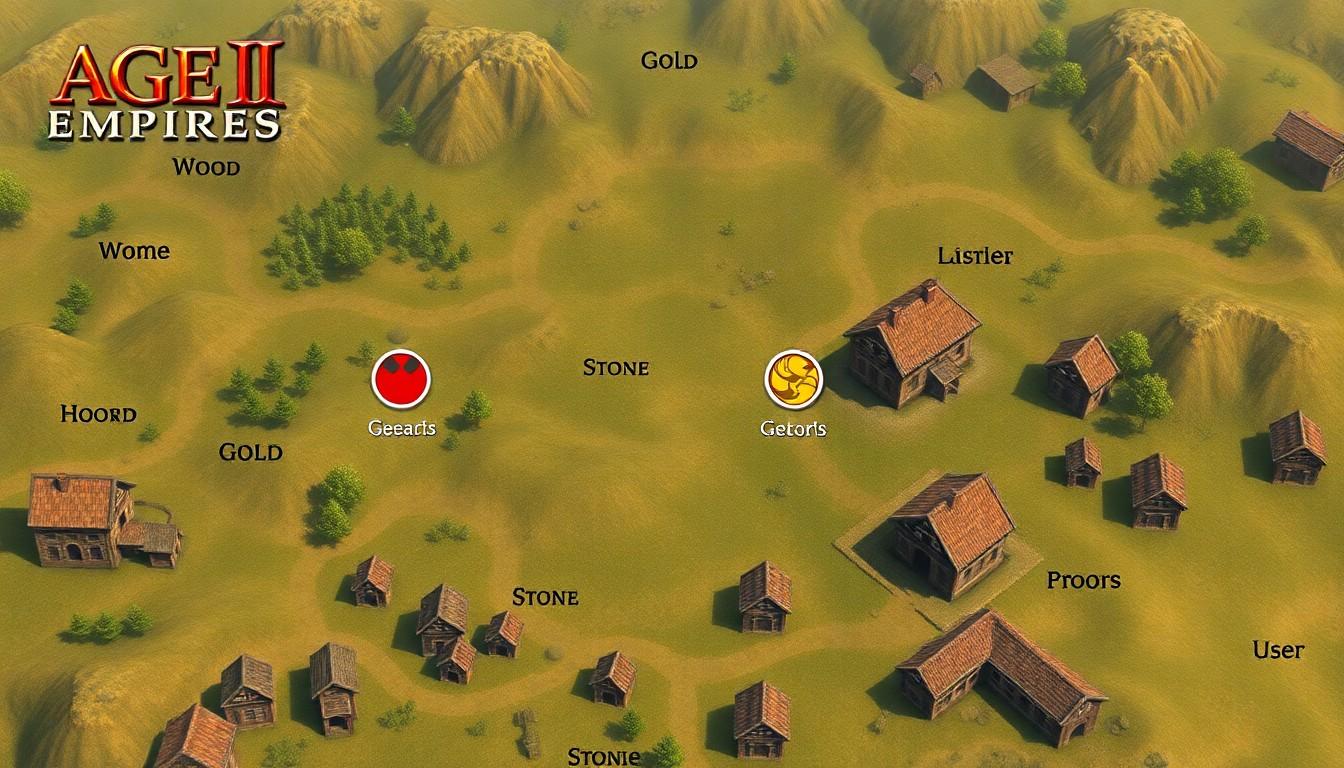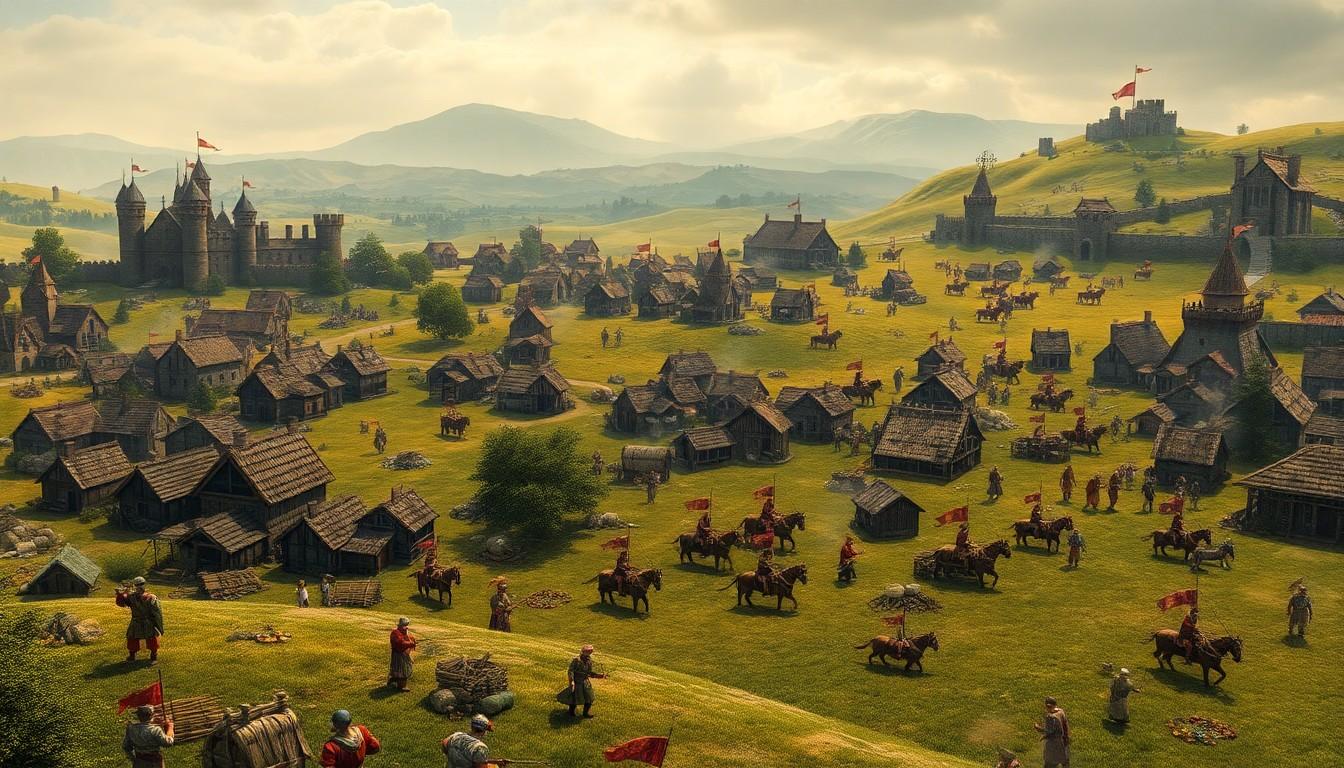In the realm of real-time strategy games, Age of Empires II reigns supreme, captivating players with its blend of history, strategy, and a dash of medieval mayhem. Whether you’re a seasoned conqueror or a fledgling feudal lord, mastering this classic can feel like trying to herd cats—if those cats were armed with crossbows and had a penchant for siege warfare.
Age of Empires 2 Guide
Age of Empires II stands as a cornerstone in real-time strategy gaming. The game immerses players in historical eras, allowing them to build civilizations from the ground up. Players select among various civilizations, each featuring unique units and technologies that influence strategic decisions.
Engaging in warfare and resource management represents a core aspect of gameplay. Players focus on gathering resources like wood, food, gold, and stone, which are crucial for building structures and training units. Constructing various buildings expands options for unit production and technological advancements.
Combatants command armies on diverse terrains, employing tactics to outmaneuver opponents. Unit types, including infantry, ranged, and cavalry, each have strengths and weaknesses. Understanding these aspects influences battle outcomes.
Players progress through multiple ages, each age unlocking new units and technologies. Advancing to the next age proves vital for gaining an advantage over opponents. This progression also offers enhancements that fortify defenses and expand military capabilities.
Multiplayer modes enhance the experience by allowing direct competition against other players. Different strategies emerge, as alliances can shift quickly and betrayal may occur. The unpredictability of human players adds a layer of excitement and challenge.
Age of Empires II continues to receive updates and expansions, ensuring its relevance in the gaming community. The game’s mix of strategy, history, and player engagement has secured a loyal fanbase over the years. Each match unfolds uniquely, offering players endless possibilities and challenges.
Game Mechanics

Game mechanics in Age of Empires II revolve primarily around resource management and production systems that shape gameplay dynamics. Players must navigate a complex web of strategic decisions to succeed.
Resources Management
Resource management stands as a cornerstone of success in Age of Empires II. Players gather four primary resources: wood, food, gold, and stone. Wood fuels building construction and unit training. Food enables the creation of new units and population growth. Gold purchases advanced units and technologies. Stone fortifies defenses and constructs key buildings. Efficiently collecting these resources ensures a strong economy, allowing for quick technological advancements that can turn the tide of battle. Players often prioritize specific resources based on their civilization’s strengths and opposing strategies.
Building and Unit Production
Building and unit production play critical roles in Age of Empires II. Players construct various buildings, each serving unique functions, from barracks for infantry to stables for cavalry. Timing and placement of structures impact military strategies and economic efficiency. Units are produced from these buildings and vary based on civilization and age advancements. Each unit type possesses distinct strengths and vulnerabilities, making unit composition vital in combat scenarios. Producing a balanced army enables players to adapt to different challenges and counter enemy strategies effectively. Building a diverse range of units provides the flexibility needed to dominate in multiplayer matches.
Strategies for Beginners
Effective strategies lay the foundation for success in Age of Empires II. Understanding key aspects of gameplay enhances the overall experience and improves performance.
Town Center Placement
Optimal town center placement profoundly impacts early development. Placing the town center near essential resources like wood and food accelerates resource gathering. Strategic placement also minimizes travel time for villagers. Consider building close to additional resources for future expansion. Avoid locations vulnerable to enemy attacks, since this can hinder growth. Each civilization has distinct advantages, so utilization of unique strengths through town center placement aids in gaining an edge.
Early Game Tactics
Early game tactics set the stage for a successful match. Players should focus on quickly producing villagers to establish a robust economy. Gathering wood, food, and gold ensures sufficient resources for military and infrastructure development, demonstrating balanced resource management. Sending scouts to explore the map uncovers key enemy locations, revealing potential threats and opportunities. Constructing a barracks early allows for military unit production. Maintaining a well-rounded military presence deters opponents. Adapting strategies based on observed enemy movements ensures effective counterplay.

Advanced Strategies
Mastering advanced strategies in Age of Empires II boosts gameplay effectiveness. Understanding civilization bonuses and utilizing map control techniques play a crucial role in achieving victory.
Civilization Bonuses
Civilization bonuses provide unique advantages that enhance gameplay. Each civilization boasts distinct strengths that can influence strategies. For example, the Britons benefit from faster farm gathering, making food production more efficient. The Byzantines receive a bonus to their permanent health upgrades, granting durability to their units. Adapting tactics based on these bonuses allows players to exploit their civilization’s strengths, ensuring an edge over opponents. Additionally, using these bonuses strategically during various game phases maximizes benefits, improving resource management and military effectiveness.
Map Control Techniques
Establishing map control techniques ensures a significant advantage. Securing key resources such as gold mines and woodlines prevents the opponent from gaining access. Players can achieve this by placing outposts at strategic locations for vision and control. Additionally, sending scouts early to monitor enemy movements provides vital information that shapes tactical decisions. Constructing forward buildings near contested areas aids in pressure against opponents, allowing for quick military responses. Utilizing terrain features enhances defensive strategies, creating choke points that limit enemy advancements and ensure control over critical map areas.
Tips for Multiplayer Success
Mastering multiplayer matches in Age of Empires II requires strategic thinking and adaptability. Effective communication among team members enhances coordination and planning, increasing the chances of victory.
Exploring the map early reveals resource locations and enemy positions. Scouting with units can uncover tactical information that helps formulate a solid strategy. Utilizing terrain provides advantages for ambushes and defensive positions.
Timing is essential. Launching attacks at key moments can catch opponents off guard, especially when they’re distracted by other conflicts. Building siege weapons creates opportunities to break through enemy defenses and claim territory.
Tech advancements should never be ignored. Prioritizing upgrades for units and economy significantly impacts a player’s strength in battle. Adapting unit compositions counters enemy strategies; knowing when to switch to archers or cavalry based on opponent units plays a critical role.
Maintaining a balanced economy underpins a successful strategy. Gathering resources efficiently allows for consistent unit production and upgrades, supporting continuous pressure on rivals. Expanding to additional towns maximizes resource collection and creates strategic options.
Focusing on map control secures essential resources and limits enemy access. Constructing outposts increases visibility for early warnings of enemy movement, as well as providing valuable scouting information.
Lastly, developing a strong defense protects against surprise attacks. Establishing walls and strategic structures deters potential invasions, allowing for a more sustainable gameplay approach. Evolving strategies based on game flow and player actions creates dynamic and exciting matches.

